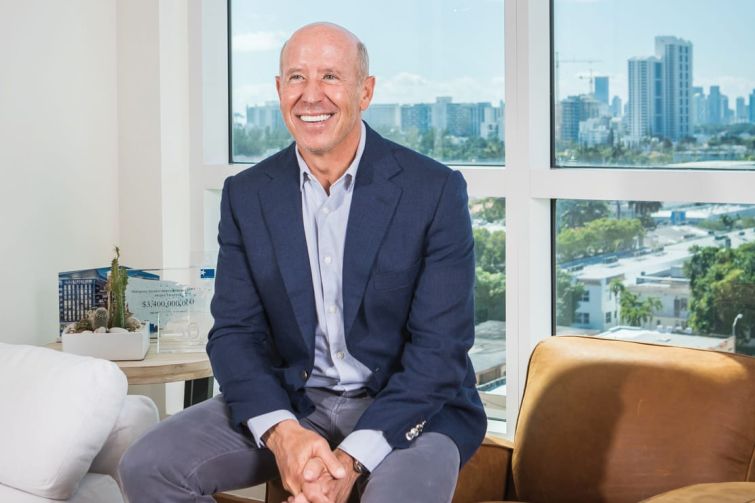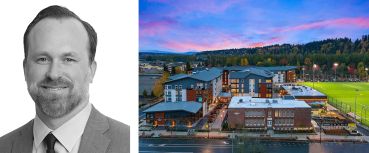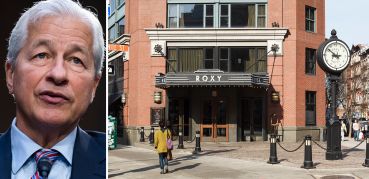Starwood CEO Barry Sternlicht Talks About Life Amid COVID-19 and What’s Next
By Mack Burke and Cathy Cunningham October 28, 2020 7:52 pm
reprints
Starwood (STWD) founder and CEO Barry Sternlicht has experienced many intervals of peaks and valleys in the commercial real estate sector on his way to cementing his firm as one of the industry’s top lenders and investors.
CO spoke with Sternlicht as part of a keynote address kicking off CO’s 5th Annual New York Fall Financing Commercial Real Estate Forum, a virtual event that took place on Oct. 22.
Sternlicht discussed how Starwood has fared through COVID-19 and his outlook for the market.
Commercial Observer: How has Starwood fared through COVID-19, and what’s surprised you the most about the past seven months?
Barry Sternlicht: There have been phases of this pandemic. And I think the first phase was the scariest, obviously, when the equity markets were crashing and nobody knew where the floor was or what the future looked like. Then, you started to see the closing of the airlines and in one of our [hotel] properties in Florida, they made us throw all our guests out of the hotel. So, now we’re looking at: What’s the shape or the slope of the recovery? Because rates fell 100 basis points or more. It was never going to be an issue of coverage — loans and properties can cover debt service — but the thing that hit you over the head quickly was that munis were not going to lower CRE taxes or even take them on. As they talked about giving aid to the hotel industry, for example, they talked at one point about helping only the hotels in the CMBS book, [which] didn’t make any sense. So, okay, you had a really good hotel and you financed it with MetLife, that was not going to be covered, just the less attractive hotel that might’ve been financed through a CMBS security? I suggested what they did in the United Kingdom, which was that the government picked up real estate taxes. That is apolitical, because you had a tax set on every asset on every city and you weren’t favoring a loan to an insurance company versus a loan in a CMBS, and cities weren’t going to lower real estate taxes even though your hotels are empty because they needed revenue. I suggested that to Secretary [Steve] Mnuchin and I had three to four other CEOs in the hotel industry join me in that, but it didn’t go anywhere. That was the targeted aid the hotel industry would need to stay afloat, and I think what you’ll see is many hotels close or certainly be sold at auction and at discounts because it’s unbelievably expensive to carry empty properties with both real estate taxes and debt service.
Our first actions were to make sure our loan book was stabilized and deal with some margin calls from banks that panicked early on and called the repo facility. We were fortunate to have a ton of cash around and amazing liquidity available if we needed it. That was the first couple of months, making sure the house could withstand the storm — closing up the shutters and battening up the house and making sure we’d be ok, which we were. On the equity side, we’re blessed with funds with great diversification in them.
[And then] we knew retail was in trouble before COVID, but the pace at which things deteriorated… it’s not over for retail. And then there’s the fact the financing markets completely dried up. It was impossible to underwrite or price a retail mall if tenants are asking you for half the rent they had in place. These things were once trading and still valued at 5 and 6 caps. You can wipe out the equity easily if you have senior debt. And, everyone wasn’t realistic on what needed to happen. If you had a loan coming due, they’d say “Pay us down,” but you’d’ say “We need a five-year extension because we’re not going to put money into this asset and then just give it back to you in a year’s time.” That’s still the case.
You have five major asset classes; two are red, one is yellow and two are green. The reddest of red is retail — and I’m not talking grocery anchored strip centers — then hotels are red, but they’ll come back but in a very uneven manner and yellow is office. Office buildings in Dallas are supposedly 40 percent occupied and in New York is around 12 to 13 percent. We’re collecting 98 percent of rents. We’re not in New York or San Francisco, which we think are the eyes of the hurricane for COVID, for lots of reasons, including the fact that they’re perceived as not safe. [People will] stay even paying 60 percent taxes if they feel they’re welcome — and 1 percent of New Yorkers pay 40 percent of the taxes — but if you make them seem like they’re demons and they’re not feeling safe and their children aren’t safe, they’re going to leave, and they are leaving right now, both in California and New York. That will have a permanent impact on those markets, sadly. I think people are surprised they can work from other locations just fine. People have decided they don’t have to be in New York, with a government that sort of disdains them.
Then you have two green asset classes. [One is] apartments, but where you are matters. We’re not in New York or San Francisco and that’s not an accident; rents are falling and vacancies are rising. The cap rates these properties were trading at, they would look a lot like a mall; your equity is wiped out, because you leveraged your apartments and took advantage of Fannie and Freddie and borrowed at 75 or 80 percent. But, when your rents go down 25 percent, even if you didn’t move the cap rate out — which you should — you’re gone, you’re bankrupt. You’ll see it in the loans that will be sold. Some people will step up and buy this stuff. Across the rest of the country, apartments are the safest asset class for institutions, and with a second stimulus that someone will pass, I think we’ll see rental rates on an upward trend.
How busy has Starwood been in other areas?
We’re quite busy in Europe and also in Japan and Australia. We’ve put a lot of money to work since the pandemic hit — over $1 billion. We’ve bought some CMBS securities, we’ve bought some bonds at a discount, stuff we’d be happy owning the assets if they defaulted. We took some stock positions in the pandemic, in stocks we thought were super cheap, and we continue to hold most of those positions because we know there will be a recovery one day. One day there will be an announcement something worked. The whole world’s medical establishment is focused on one thing like never before in the history of the earth. They will succeed. There will be something that will give people confidence to resume a more normal life or the life we used to have. In the U.S. in particular, I don’t think you will see permanent changes in the way people act. They will go to restaurants and to stadiums. The key for investing is to make sure you can figure out when you’re getting in for when you can get out. That is an art form. And in a way, it’ll be fun. This will be a fun cycle.
When we’re selling assets today, the pricing isn’t bad. I don’t think sellers are willing to take a big discount. Transaction volumes are down 65 percent and it affects everything — the lending and equity markets. We are selling an asset in Raleigh and we got within a point or two of the pre-COVID-19 price. It was bought by an offshore investor. Particularly, foreign investors are looking at this as a great opportunity to get into the U.S. at a good basis. They think this is a good vintage, because there will be distress. Banks don’t want to [have to take the title and have to pay to maintain properties until guests come back]. They don’t want to be the ones carrying the losses and paying the property taxes. So, I think they’ll sell [off loans] and we and others will be quite active.
How do you see CRE evolving post-COVID-19?
Real estate will always be an important asset class. The one big thing is that it produces yield in a world with no yield. If you look at the private equity business, there are, I’m guessing, 30 funds with more than $10 billion in commitments. In real estate, there are three [players] who are mega and then there’s a much smaller group of more diversified [players]. Because yields are low all over the world, real estate will always have a bid. You should be reassured that companies like Facebook took 750,000 square feet in New York in the middle of a pandemic and Amazon bought the Lord & Taylor Building in New York in the beginning of the pandemic and that Google is still working on their St. John’s Terminal property — that’ll be 5 million square feet for Google in Manhattan. I don’t think tech is going home forever and I certainly don’t think all of are going home forever.
This keynote interview was edited and condensed for print and online publication.


